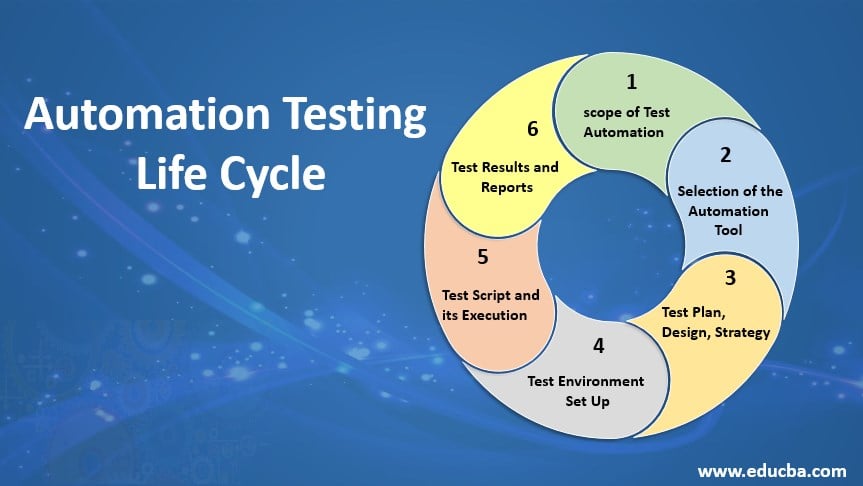The Ultimate Guide to Implementing Automation Testing Successfully
The Ultimate Guide to Implementing Automation Testing Successfully
Blog Article
From Guidebook to Automated Testing: A Comprehensive Overview to Transitioning Efficiently and Effectively
In the realm of software application screening, the change from manual to automated processes has come to be a progressively important transition for organizations seeking to boost performance and precision in their testing methods. The trip from handbook to automated testing is not without its challenges, but when approached tactically and with a clear plan in mind, the advantages can be considerable.
Benefits of Automated Examining
Automated screening uses various advantages, improving effectiveness and accuracy in software application growth procedures. Automated tests can be run all at once on numerous gadgets and running systems, dramatically speeding up the testing phase compared to manual screening.
Furthermore, automated screening guarantees a higher degree of accuracy in spotting issues. Uniformity in testing is also boosted, as automated tests implement the very same actions specifically each time they are run.
Picking the Right Devices

First of all, assess your demands and goals. Understand the extent of your job, the technologies included, and the ability of your group. This analysis will help you identify the capacities and functions you call for in your testing devices.
Secondly, take into consideration the compatibility of the devices with your existing processes and systems. Seamless assimilation with your present software application development lifecycle is necessary to ensure a smooth change to automation.
In addition, evaluate the scalability and adaptability of the devices. As your testing needs develop, the tools need to have the ability to adapt and suit changes properly.
Last but not least, consider the assistance and area around the tools. Durable support and an active individual neighborhood can give useful resources and help when implementing automated testing. By carefully considering these facets, you can choose the right devices that straighten with your needs and set the phase for an effective change to automated screening.
Creating Reliable Test Manuscripts

When crafting examination manuscripts, it is necessary to think about the particular requirements of the software being evaluated and make certain that the scripts deal with all essential performances. Clear and descriptive calling conventions for test manuscripts and test instances can boost readability and maintainability. Furthermore, including error handling devices within the examination manuscripts can aid in recognizing and resolving concerns quickly.
In addition, arranging test scripts right into modular components can boost reusability and scalability, lowering redundancy and boosting efficiency in examination manuscript upkeep. Routine testimonials and updates to check scripts are important to keep pace with evolving software program needs and capabilities. By adhering to these principles, testers can develop robust and browse around this web-site effective examination scripts that add dramatically to the success of automated testing procedures.
Integrating Automation Into Workflows
Effective integration of automation devices into existing operations simplifies procedures and boosts performance within software program advancement cycles. When integrating automation right into operations, it is crucial to recognize recurring tasks that can be automated to save time and lower human mistake. By flawlessly incorporating automated screening tools like Selenium or Appium into the software application development lifecycle, groups can achieve faster responses on code adjustments, causing quicker bug discovery and resolution. This assimilation permits for continuous screening throughout the growth process, guaranteeing that any kind of issues are recognized early, a fantastic read resulting in greater software application quality. Additionally, automation can be utilized to cause tests automatically after each code devote, supplying instant validation and releasing up testers to focus on more complex circumstances. Correct assimilation of automation devices calls for cooperation in between development, screening, and operations groups to establish a unified workflow that optimizes effectiveness and performance in delivering premium software products.
Making Certain a Smooth Change
Effectively transitioning to automated screening includes thorough planning and cautious execution to maximize and lessen disruptions efficiency in the software growth process - automation testing. To ensure a smooth change, it is necessary to begin by performing a complete analysis of the present testing processes and determining areas where automation can bring the most considerable benefits. Engaging with all stakeholders at an early stage while doing so, consisting of developers, testers, and job supervisors, is essential for garnering support and buy-in for the automation effort
Communication is vital throughout this shift phase. Clear communication of the goals, advantages, and assumptions of automated testing assists to manage any kind of resistance or worries that may arise. Additionally, supplying sufficient training and resources for staff member to upskill in automation devices and strategies is crucial for making certain an effective transition.

Verdict
To conclude, transitioning from guidebook to automated screening uses countless advantages, consisting of raised performance and integrity. By choosing the appropriate tools, writing efficient examination scripts, and integrating automation perfectly into process, organizations can make sure a effective and smooth transition. It is vital to welcome automation as a useful property in software application screening procedures to enhance general high quality and productivity.
In the world of software application testing, the change from manual to automated procedures has actually ended up being a significantly important change for organizations seeking to improve effectiveness and precision in their screening techniques. Automated examinations can be run concurrently on multiple devices and operating systems, substantially speeding up the screening phase contrasted to hands-on screening. Consistency in screening is also enhanced, as automated examinations perform the very same actions precisely each time they are run.To guarantee the successful execution of selected screening tools, the creation of reliable test manuscripts plays an essential function in confirming the capability and efficiency of automated processes - automation testing. By complying with these principles, testers can create robust and reliable test scripts that add significantly to the success of automated screening processes
Report this page